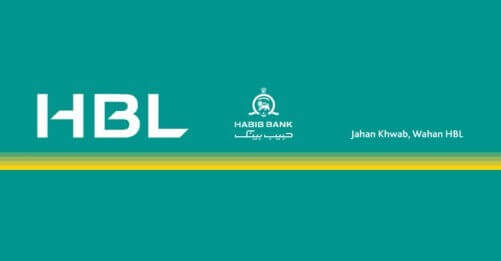Habib Bank Pakistan: Crorepati Scheme Review
WHEN AND HOW DID THE SCHEME START
- Towards the end of twentieth century Habib Bank Ltd found itself hard hit by a huge infected loan portfolio and facing a tight liquidity crunch
- At the same time a great deal of liquidity got injected into the economy on account of conversion of the Foreign Currency Accounts into Pakistani rupee.
It seemed an opportune time for banks to mop up excess liquidity by offering attractive rates of return.
SBP allowed banks in June 1998 to introduce “viable new products and schemes” provided:
- Such schemes should meet the Sharia injunction
- They should ensure reasonable return to the depositors
HOW DID THE PUBLIC RESPOND
Habib Bank Ltd’s CrorePati scheme became the center of public attention despite other lucrative schemes such as Maal-a-Maal of MCB, Zaramaad and Caramad of UBL, etc.
A total of Rs 47. 3 billion were mobilized through the scheme. Most of the deposits came from the middle and lower income groups of the society. In many instances people pooled in their resources to purchase the RS 50,000 denomination certificates which offered a rate of return of 8% per annum.
It was also reported that portfolio substitution of a higher order (shift of resources from National Savings Schemes and Prize Bonds) also took place due to these schemes.
WHAT WENT WRONG
We can analyze the situation with the help of the hypothetical example explained below:
| I | II | III |
NO OF PARTICIPANTS |
RATE OF RETURN |
RATIO OF WINNERS & LOSERS |
| assume total participants are 100,000 and each purchased one crorepati certifacate
therefore,
total deposits: 5,000,000,000 (five billion) |
winners of 10,000,000RATE OF RETURN …200% (PLUS THAT AVAILABLE TO NON-WINNERS)
NON-winnersadmissible rate………………..8.0% deductions: witholding tax .0.8% zakat………………2.5% real rate of return…………….4.7% |
WINNERSPRIZES IN EACH DRAW……………67 TOTAL DRAWS IN A YEAR……….…20 TOTAL WINNERS …………………1340
AS % of sample population WINNERS……..1.34% non-winners……98.66% |
DISPARITY IN RATES OF RETURN
A person who won the prize of 10 million earned a rate of 200% on his deposit while others received real rate of return of only 4.7%
DISPROPORTION IN RATIO OF GAINERS AND LOSERS
As clear from the table above, there was a vast gap between the ratio of winners and non-winners.
NONCONFORMITY WITH SHARIAt INJUNCTIONS
The Council of Islamic ideology gave the verdict that the schemes were in violation of Shari at injunctions.
POOR DEMAND FOR LOANS
The large numbers of deposits mobilized by Habib Bank Ltd were not used up efficiently due to the poor economic conditions prevailing in the country. Demand for new loans was low and the mark-up given to the depositors became an added cost for the bank.
THE END OF THE SCHEME
The CrorePati scheme of Habib Bank Ltd and others of similar type offered by other banks were finally withdrawn on December 31, 1999.
The deposit mobilization scheme was successful in mobilizing large amount of deposits but posed a loss to the bank in terms of the high cost incurred.
UBL: Human Resource on Downsizing
DOWNSIZING
Downsizing was introduced in financial institutions in by the government in 1997 as a cost-containment initiative. Considering this agenda HBL introduced the Golden Handshake Scheme in October 1997, which aimed at downsizing and rightsizing the existing organization structure.
RIGHTSIZING
Rightsizing refers to restructuring the brick and mortar branch network i.e. the loss-making branches are usually merged into nearby lucrative branches.
Since the start of the programme in 1996, 222 branches have either been shut down or merged with other profitable ones.
- Reduced bank’s intermediation costs
- Reduced the bureaucratic layers in the bank
DOWNSIZING
The filtering process that resulted in reduced number of excess, incompetent and inefficient employees. Downsizing is a means of improving the quality of human resources and monitoring the performance of employees on a regular basis.
GOLDEN HANDSHAKE SCHEME
Permanent employees at all hierarchical levels were offered golden handshakes or voluntary retirement schemes. It was estimated that HBL should be saving Rs.20 to 30 million annually through reduction in staff size alone.
FAILURE OF THE SCHEME
- Overall employee size declined by 28% yet the salaries account recorded a decrease of only about 7%
- The bank ended up losing efficient and professional employees rather than the ones the management would have wanted to leave. This led to hiring contractual employees and consultants who had to be paid almost thrice of what regular employees would have received.
COMPARISON BETWEEN
| 1996 | 1998 | 1999 | |
| Estimated redundant staff | 8000 | 3674 | 1246 |
| Management levels | 7 | 4 | 4 |
| Total branches | |||
PRIVATISATION
WHY PRIVATISATION
Pakistan is one of those countries where IMF and World Bank policies towards Structural Adjustment Programme and other strategies are being implemented. The most controversial and debatable of these policies is Privatization of State-Owned Enterprises (SOEs).
The objectives of Privatization are:
- To make available the much-needed cash from investors
- To improve the working of the bank
FACTORS RESPONSIBLE FOR DELAY IN PRIVATISATION OF HBL
In 1991 the government made public its decision to privatize Habib Bank Ltd and other SOEs.
RISKS POSED BY PRIVATIZATION
As there do not exist large parties in the country who can legitimately qualify for purchasing the bank.
OPTIONS
Sell on, as is where is basis
Sell after bad debts have been recovered
Establishment of Resolution Trust Corporation (RTC)
The RTC would first separate the bad loans from the good ones. The bank could then be sold off as a clean bank.
The RTC over bad debt portfolio of the bank.
The bank receives government bond of say 7 years maturity with face value of bad debt
Bank receives market rate of interest on the bond thus strengthening bank’s cash flow.
Major improvement in sales proceed from privatization
Use sale proceeds to buy back bonds or retire other debt
Uncollectible debts remain a cost to taxpayer
LIQUIDATE THE BANK
Risks
Formation of private monopolies














